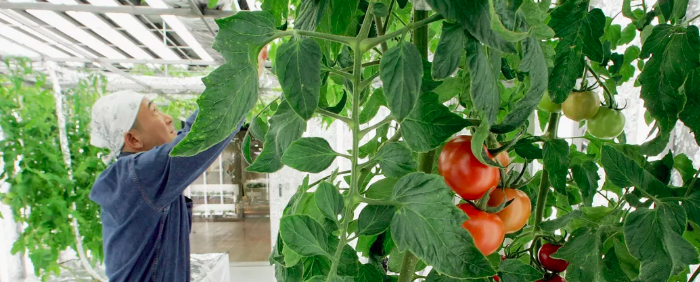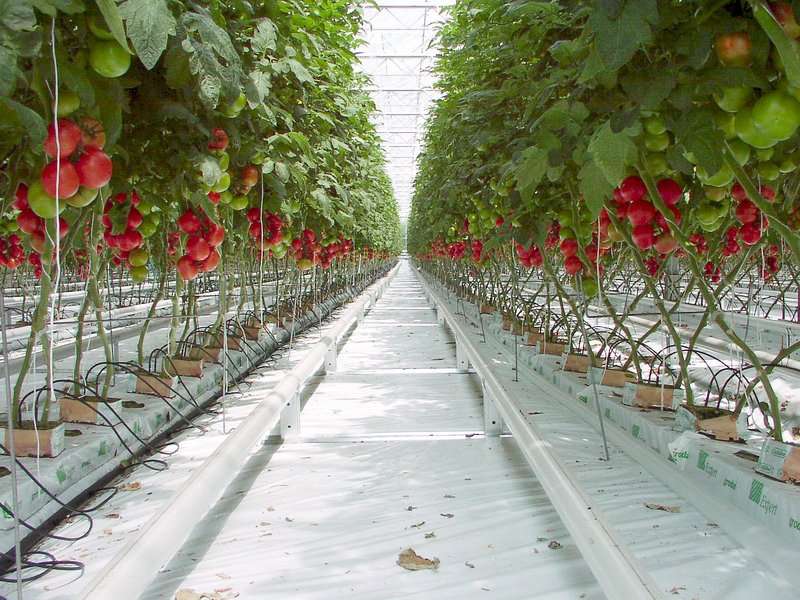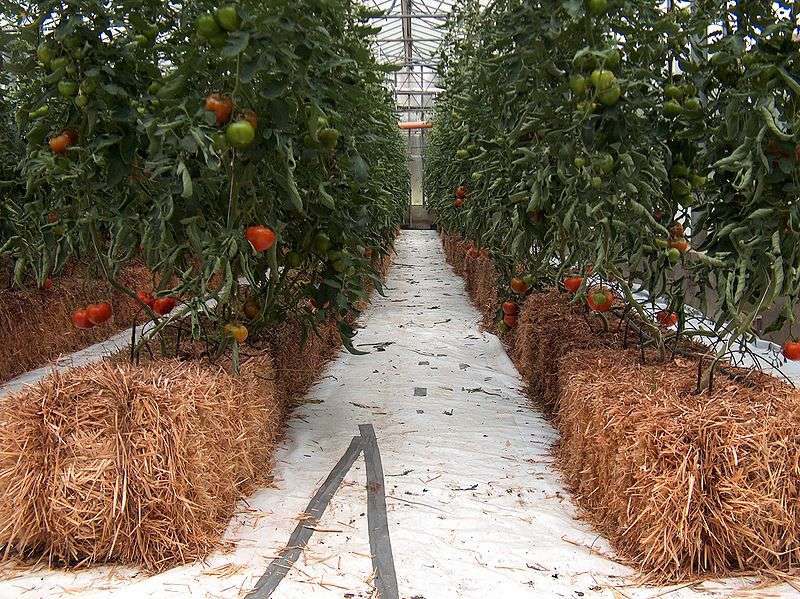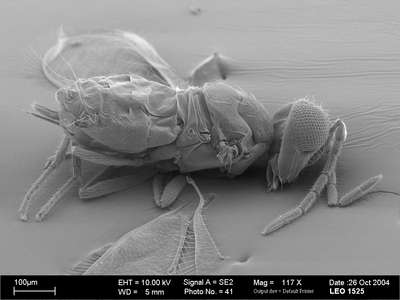
The tomatoes of industrial production are generally cultivated above ground in vast greenhouses or tunnels of several hectares, in the southern parts of France, in Brittany and in northern countries like the Netherlands and Belgium.

Above ground tomato crops are grown in rows covered with rockwool . Their development is fully programmed, including a diet, totally artificial, a mixture of water and fertilizer. The nutrient solution used is provided by a continuous drip, or at close frequencies , to fill the little reserve of the substrate . This solution is fully adapted to the needs of the plant.

Glass wool, sand
In some hot desert regions, such as in Israel for example, the same principles of cultivation are practiced, the glass wool being replaced by sand . This allows the production period to be extended considerably by heating greenhouses in winter.

Of course, in greenhouses, it is necessary to promote fruit set, the latter being the initial phase of the formation of the fruit . This is the moment when the ovary of the flower turns into fruit after fertilization . The yield depends on this stage thanks to a good pollination of the flowers , the latter, following a lack of wind , can be obtained by vibrating the plants to promote the dispersion of pollen.

Aboveground culture and pests
Of course, tomato producers producing above ground must also control any parasitic attacks.

Thus they develop in their greenhouses, for example, breeding a useful insect of the family Hymenoptera, Encarsia formosa , able to effectively fight dangerous parasites , whiteflies . This is a biological control technique that is very effective.